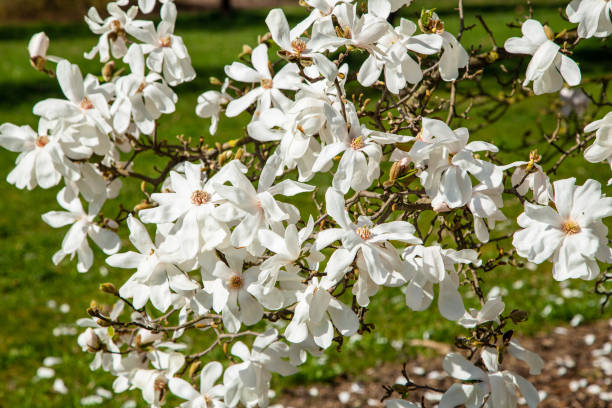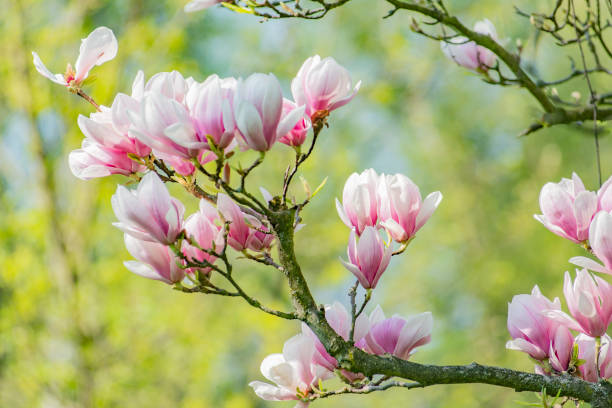Do All Magnolia Trees Bloom?
All magnolia trees will bloom, but some will blossom more abundantly than others. Factors that influence how much a magnolia tree blooms include the climate, the variety of grown magnolia trees, and the care and attention given to the tree during its growth. However, maybe you are curious and bothered why your Magnolia is not blooming. There are several reasons why Magnolia is having difficulties in blooming.

Table of Contents
Reasons Why Magnolias Will Not Bloom
Inadequate Sunlight
If a magnolia is grown in too much shade, it will produce fewer flowers, grow slowly, and be in poor health overall. The foliage may look droopy, and new shoots may appear stunted. In areas with hot, dry summers, magnolias benefit from some shade, with an average of four to six hours of sun per day. In climates with more forgiving summers, the plants thrive in more than six hours of sunlight per day. Excessive sun exposure in hotter climates will not prevent flowering. Still, it may damage the flowers and foliage of summer-blooming species.
Fertilizer Misapplication
A magnolia’s blooms will suffer if it receives excessive fertilizer. Fertilizer contains three essential nutrients: nitrogen, phosphorus, and potassium. Nitrogen promotes shoot and leaf growth, phosphorus encourages flowering and root strength, and potassium improves Magnolia’s overall health and strength. Too much nitrogen will promote green growth while reducing flowering. For magnolias, balanced fertilizer with equal parts nitrogen, phosphorous, and potassium applied in the spring works best.
Soil pH That is Too Acidic
Magnolias require an acidic soil environment to flower, grow, and basically survive. The ideal soil pH range is between 5.0 and 6.5. Stunted growth and discolored or deformed foliage may result from anything significantly more or less. Only a soil test can accurately determine the pH level of your soil. Several amendments, such as iron sulfate and elemental sulfur, can lower it if it’s too high. Lime raises the pH of the soil.
Root Damage
Damage to the tree’s roots can slow down its flowering. Usually, root damage won’t cause your Magnolia to not bloom at all, but it might not bloom as much. Root damage in plants is caused by insects and diseases. Still, people can also mess with a magnolia’s root system by digging around in its root zone, which can cause it to lose its roots. If you work in the tree’s root zone, you could hurt its feeder roots, which could hurt the tree’s ability to get nutrients and water, making it less likely to bloom.
According to the Integrated Pest Management site at the University of California, root-eating insects don’t usually bother magnolias. The only root-damaging diseases that affect them are root rots caused by too much watering. Root rot is prevented by ensuring the soil doesn’t stay wet all the time.

When Do Magnolia Trees Bloom?
This varies depending on the type of Magnolia in question. Others bloom from late winter to midsummer, given the wide range of these trees’ blooming periods.
The Star Magnolia blooms from late March to the end of April, heralding the arrival of warmer weather in the Pacific Northwest. It is possible to see the sweet bay and southern magnolias unfurl their wide, cup-like petals during May and June.
Do Magnolia Trees Bloom Every Year?
Your magnolia tree will usually bloom every year if old and in the right climate. When a magnolia tree starts blooming, it usually blooms for the rest of its life. This does not apply to newly transplanted magnolias or unhealthy magnolias.
Even if they are old enough, newly transplanted magnolias rarely bloom. The plant has yet to adapt to its new surroundings.
Damaged or unhealthy magnolias, on the other hand, rarely bloom. A tree that has been damaged by transplanting, pests, or frost may not be able to bloom. The plant is just recovering from blooming, which takes time and energy.
Can Magnolia Trees Bloom Twice A Year?
Yes, magnolia trees can bloom twice a year, but this is a rare occurrence. Depending on the variety, some varieties can bloom twice a year. It blooms once in the spring and once in the summer. Chinese or Saucer Magnolia varieties are most frequently found to bloom twice in a season.
How Old Must A Magnolia Tree Be Before It Blooms?
The minimum age for blooming a magnolia tree varies by variety. While some varieties bloom as early as three years old, many varieties do not bloom until the tree reaches the age of ten. Magnolia trees have a lifespan of up to 120 years. So ten years is a relatively short time to wait for blooms.
